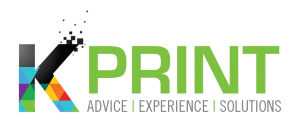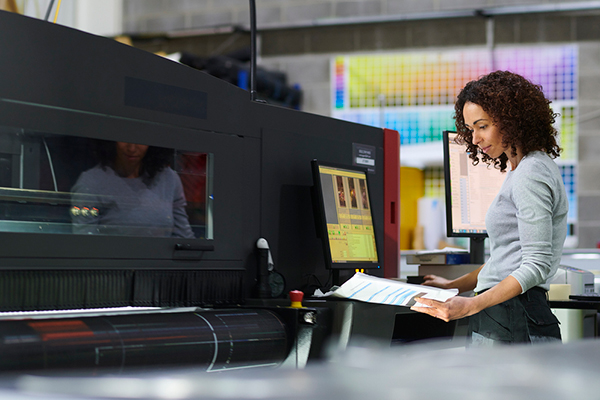Printing is an essential aspect of modern marketing, and there are various types of printing available today. In this article, we will discuss two of the most popular printing methods: digital printing and lithography, to hopefully give you a better understanding of the two main printing methods.
Digital printing
Digital printing is a modern printing technique that involves printing directly onto a variety of materials. This method is ideal for small to medium-sized print runs, and it offers a fast turnaround time and high-quality results. Digital printing is often used for printing business cards, flyers, brochures, and other marketing materials.
One of the main advantages of digital printing is that it allows for variable data printing. This means that each printed piece can be customised with unique information, such as names, addresses, and other personalised details. Digital printing is also cost-effective, as the setup costs are minimal, and printing can be done on-demand.
Digital printing uses a variety of printing technologies, including inkjet and laser printing. Inkjet printing uses ink droplets to create an image on the printing surface, while laser printing uses toner particles that are fused onto the surface using heat. Both technologies offer high-quality results, with laser printing being ideal for printing text and graphics, and inkjet printing being ideal for printing high-quality images and photographs.
Another advantage of digital printing is that it offers a wide range of printing materials. Digital printers can print on a variety of materials, including paper, card stock, vinyl, fabric, and more. This makes digital printing ideal for a wide range of applications, from printing stationery to custom t-shirts and trade show displays.
Lithographic printing
Lithography is a traditional printing method that involves printing onto a flat surface, typically a metal plate. This is then transferred onto paper or other materials. Lithography is ideal for large print runs, as it is a cost-effective and efficient method of printing.
One of the main advantages of lithography is that it produces very high-quality prints with sharp and vibrant colours. If, for example, you have a corporate colour that’s represented by a Pantone® reference, lithographic printing is the way to print that colour, ensuring accuracy every time. It is also a versatile printing method, as it can be used to print on a variety of materials, including paper, cardboard, and plastic.
Lithography works by using a chemical process to create the printing plate. The plate is coated with a photosensitive emulsion, and the image is then transferred onto the plate using a photographic negative. The plate is then treated with chemicals that create a hydrophobic image, which repels ink. The plate is then mounted onto a printing press, and ink is applied to the plate. The ink adheres to the hydrophobic image and is transferred onto the printing surface.
Because lithography requires a significant amount of setup time it is not ideal for small print runs. It also requires specialised equipment and skilled operators, which can increase the cost of printing.

Comparison
Digital printing and lithography offer different advantages and disadvantages, and the choice of printing method will depend on the specific needs of the project. Digital printing is ideal for small to medium-sized print runs, while lithography is suitable for large print runs where quality is a priority.
Digital printing:
- Marketing materials – Digital printing is ideal for printing marketing materials, such as business cards, flyers, brochures, and postcards. It allows for on-demand printing and variable data printing, which means that each printed piece can be customised with unique information.
- Direct mail – Digital printing is often used for printing direct mail pieces, such as letters and postcards. Variable data printing allows for personalised printing, which can increase the effectiveness of direct mail campaigns.
- Custom merchandise – Digital printing is ideal for creating custom merchandise, such as t-shirts, mugs, and phone cases. It allows for printing on a variety of materials, including fabric and plastic.
- Packaging – Digital printing is also used for printing packaging materials, such as labels and boxes. It offers a high-quality print and allows for variable data printing, which can be useful for tracking and inventory purposes.
Lithographic printing:
-
Large print runs – Lithographic printing is ideal for large print runs, as it is a cost-effective and efficient method of printing. It is often used for printing books, magazines, and newspapers.
-
Marketing materials – Lithographic printing is also used for printing marketing materials, such as brochures, flyers, and posters. It offers a high-quality print with sharp and vibrant colours.
-
Packaging – Lithographic printing is often used for printing packaging materials, such as boxes and cartons. It offers a high-quality print and can print on a variety of materials, including cardboard and plastic.
-
Art prints – Lithographic printing is also used for printing art prints and reproductions. It offers a high-quality print with a wide range of colours and can print on a variety of surfaces, including canvas and paper.
Final thoughts
Printing is a vast subject but we hope that you have a better understanding of the two main methods of printing. Digital printing and lithographic printing are used in a variety of industries and applications. The choice of printing method will depend on the specific needs of the project, such as the size of the print run, the type of materials to be printed on, and the desired print quality. By understanding the use cases of each method, you can choose the one that best suits your needs and budget. K Print are YOUR print experts – for both digital and lithographic printing. When you tell us what you want, we’ll tell you what you need. Contact us today for any printing needs.


Recent Comments